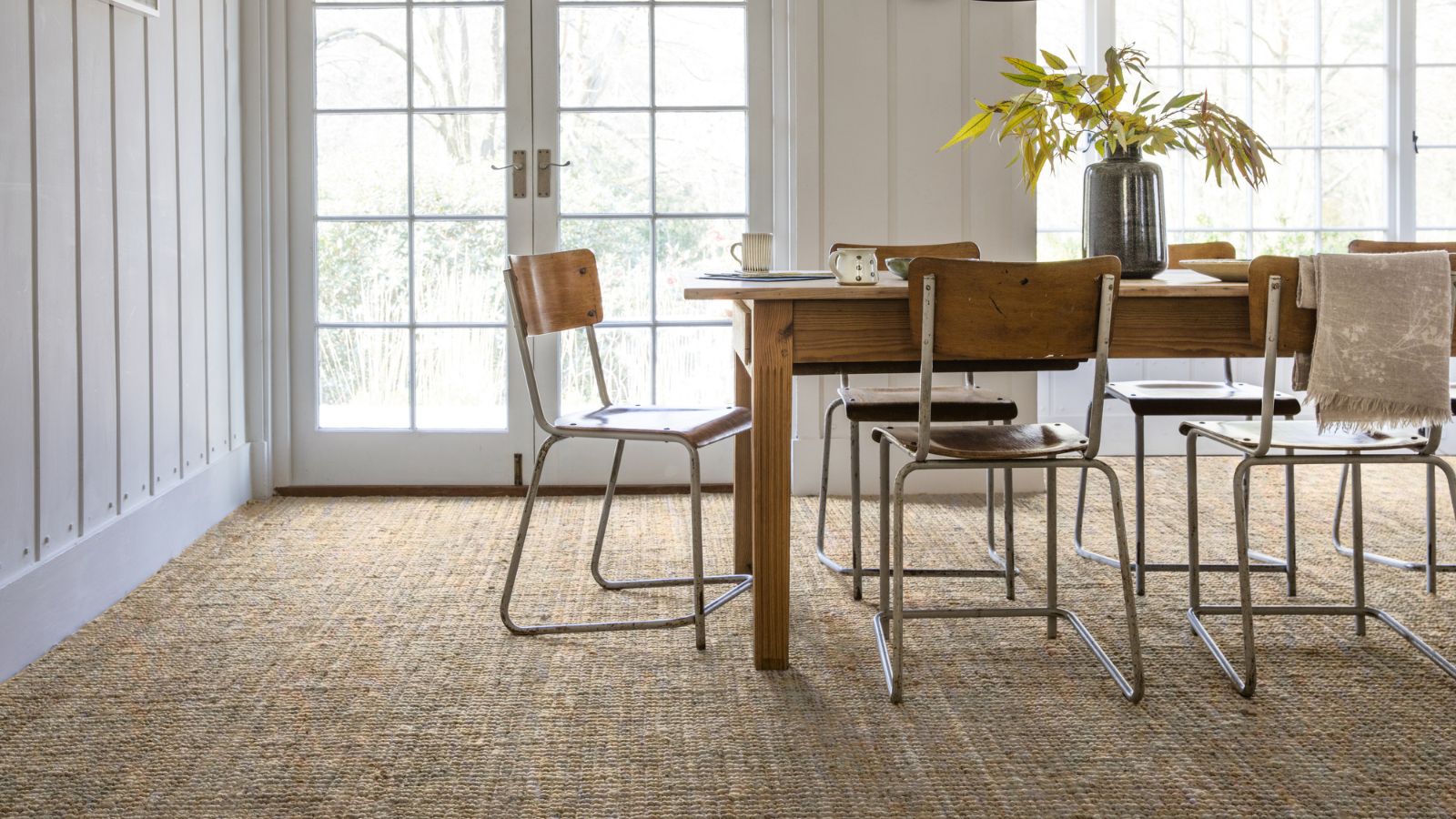What is a Belfast sink and is it different to a Butler sink?
Exactly what is a Belfast sink and why might you want one? Here, we take a look at what defines this traditional type of sink, styles that are similar and their pros and cons
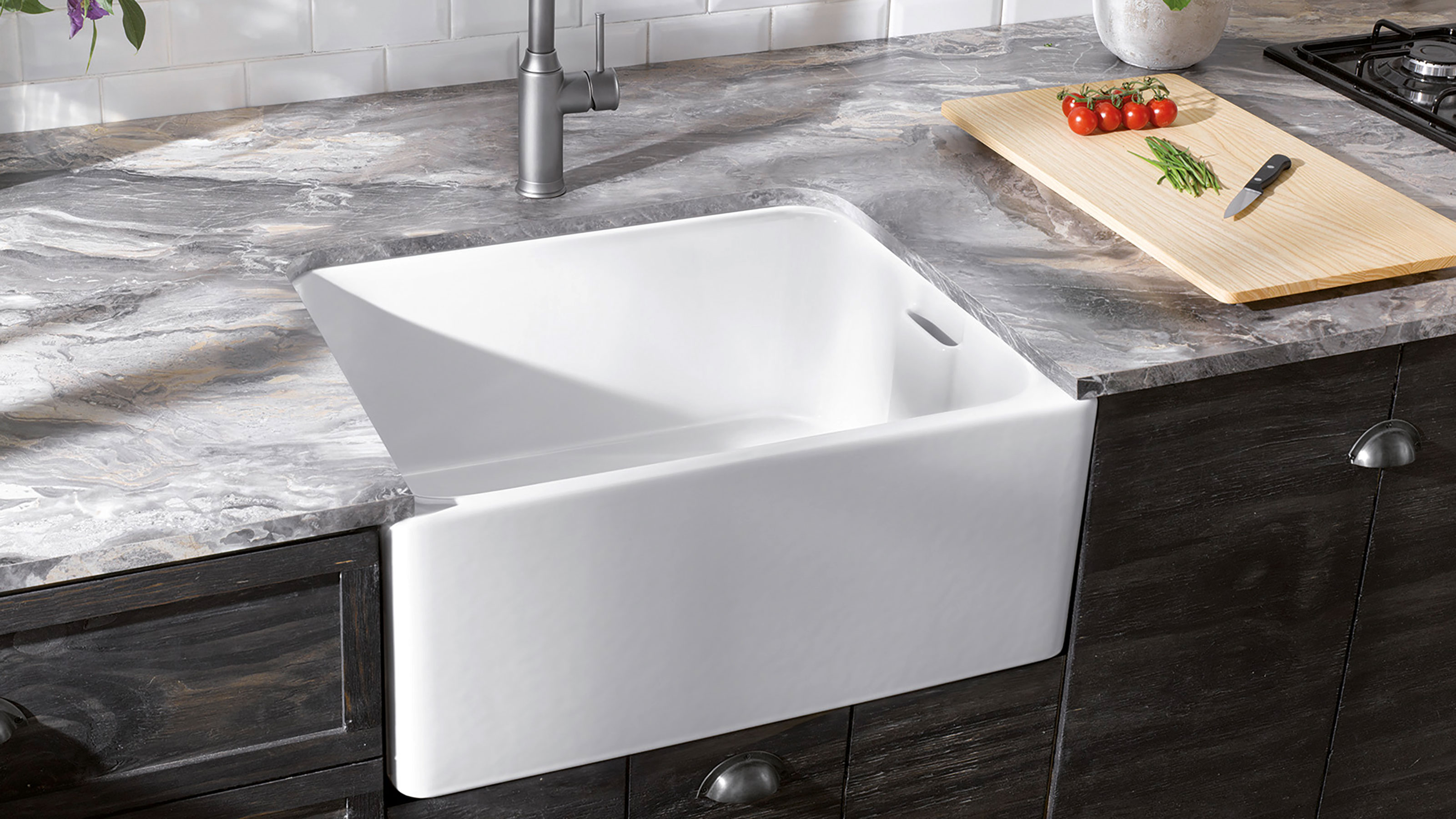
Just what is a Belfast sink? It can actually be a little confusing to understand the difference between this type of sink and a Butler sink, which is very similar in design, and the practical benefits it offers.
The best kitchen sinks for you will be styles that accommodate all your needs, so understanding how different styles work is important. The Belfast sink has long been a popular feature in kitchens and utility rooms but for many, what makes up this style of fitting remains something of a mystery, leading to questions about how to differentiate between other, very similar, types of sink.
In this handy guide, we explain exactly what a Belfast sink is, whether this is a design that could work for you and how to choose a product that will meet all your needs — plus we investigate the modern alternatives now on offer.
What is a Belfast sink?
Although Belfast sinks remain a popular feature for many people designing a kitchen or utility room, they have actually been very much sought after features since the 1700s when they were often found in the kitchens of the landed gentry.
Built with practicality in mind, these sinks were deep (some say they were built to be deep enough to bathe a small child) and roomy. Both Belfast and Butler sinks were made of white ceramic fireclay and they would not typically have featured tap holes like so many modern designs of sinks. Taps were commonly mounted on the section of worktop behind or on the wall. These days, more modern designs sometimes come complete with tap holes, but be sure to check.
Although they were originally single sinks, these days they are also available in one-and-a-half and double configurations. They are still rectangular in form.
What is the difference between a Butler and Belfast sink?
These two types of sink are incredibly similar but there are some key differences you might like to be aware of. These variations go all the way back to Victorian times.
Bring your dream home to life with expert advice, how to guides and design inspiration. Sign up for our newsletter and get two free tickets to a Homebuilding & Renovating Show near you.
"The Butler sink was originally designed for the Butler’s pantry in London," explains Dominic Lees Bell, kitchen and bathroom design expert from Tap Warehouse. "Back in the day, London had far less readily available water than it does these days. Because of this, the sinks had to be designed specifically to conserve water, a stark contrast to the Belfast models."
The issue of conserving water wasn't so important in Belfast at this time, so a slightly different design of Butler sink developed.
"While London is further inland, Belfast is on the coast and so obtaining water was less of an issue," says Dominic. "London Butler sinks were built to encourage people to conserve water. Butler sinks then were made without a 'weir overflow', unlike Belfast sinks which are built with an overflow, as at the time it didn’t matter if a little water got wasted."
While things have definitely moved on since this was so much of an issue, the design difference between the two remains.
"Modern designs have seen the addition of a small overflow at the back of a Butler sink, but the difference in the overflows remains the primary difference between the two," confirms Dominic.
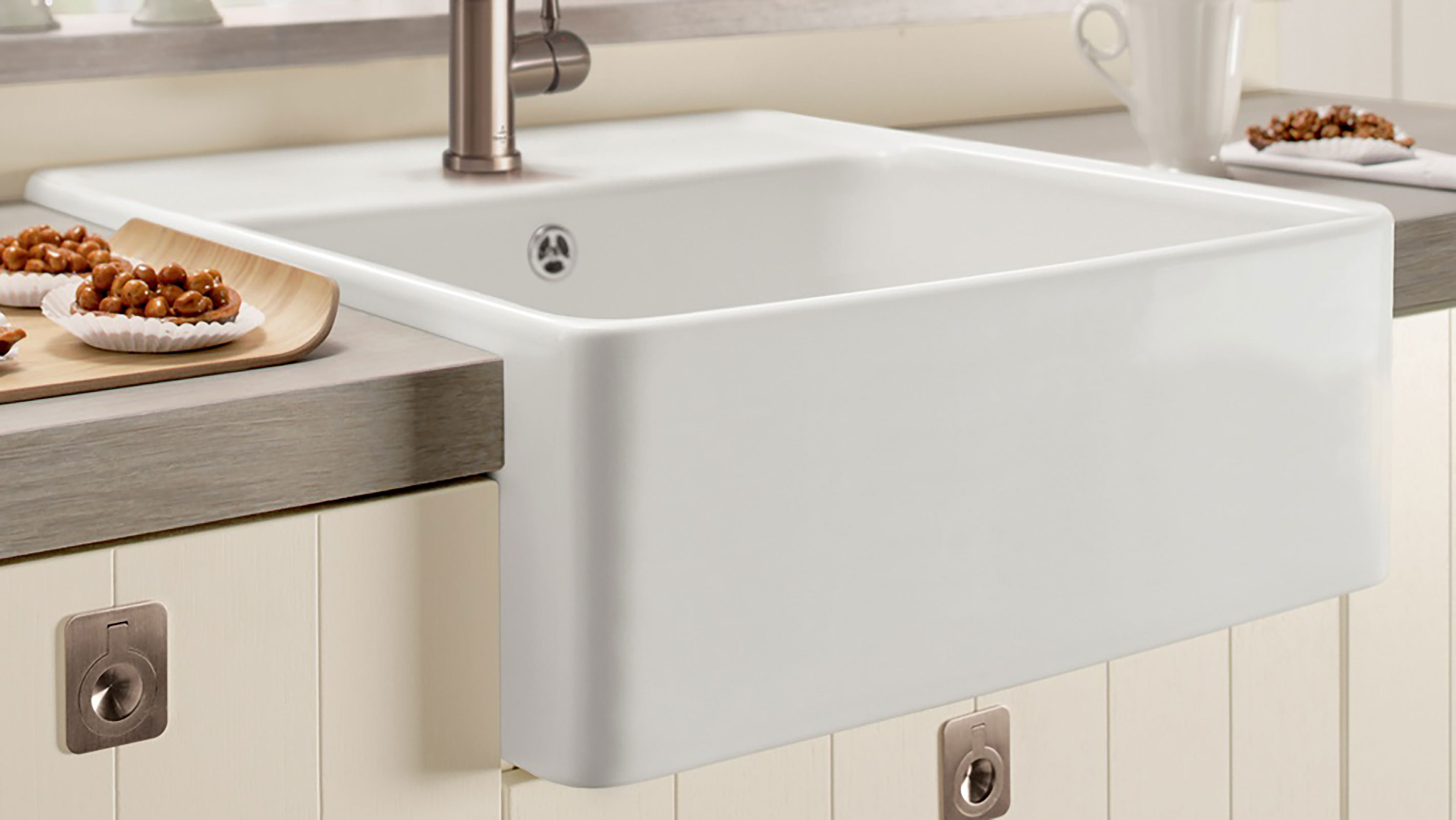
What are the advantages of a Belfast sink?
There is a good reason why both Belfast and Butler sinks remain so popular, particularly for those looking for utility room sink ideas — both come with many benefits. These include:
- Instant charm: Their appearance brings a classic, farmhouse feel to any space.
- Durability: Fireclay ceramic is incredibly durable and resists chips, scratches and stains well.
- Large size: Their roomy capacity makes them useful for a range of uses, including washing laundry, soaking big pots and pans — even bathing smaller dogs.
- Easy-to-clean: Ceramic sinks are easy to clean and stain-proof.
- Heat proof: No need to worry about placing hot pots and pans down in one of these sinks as ceramic is heat-resistant.
- Design variations: Modern takes on the Belfast sink come in all kinds of configurations, colours and materials making them suitable for all styles of kitchen.
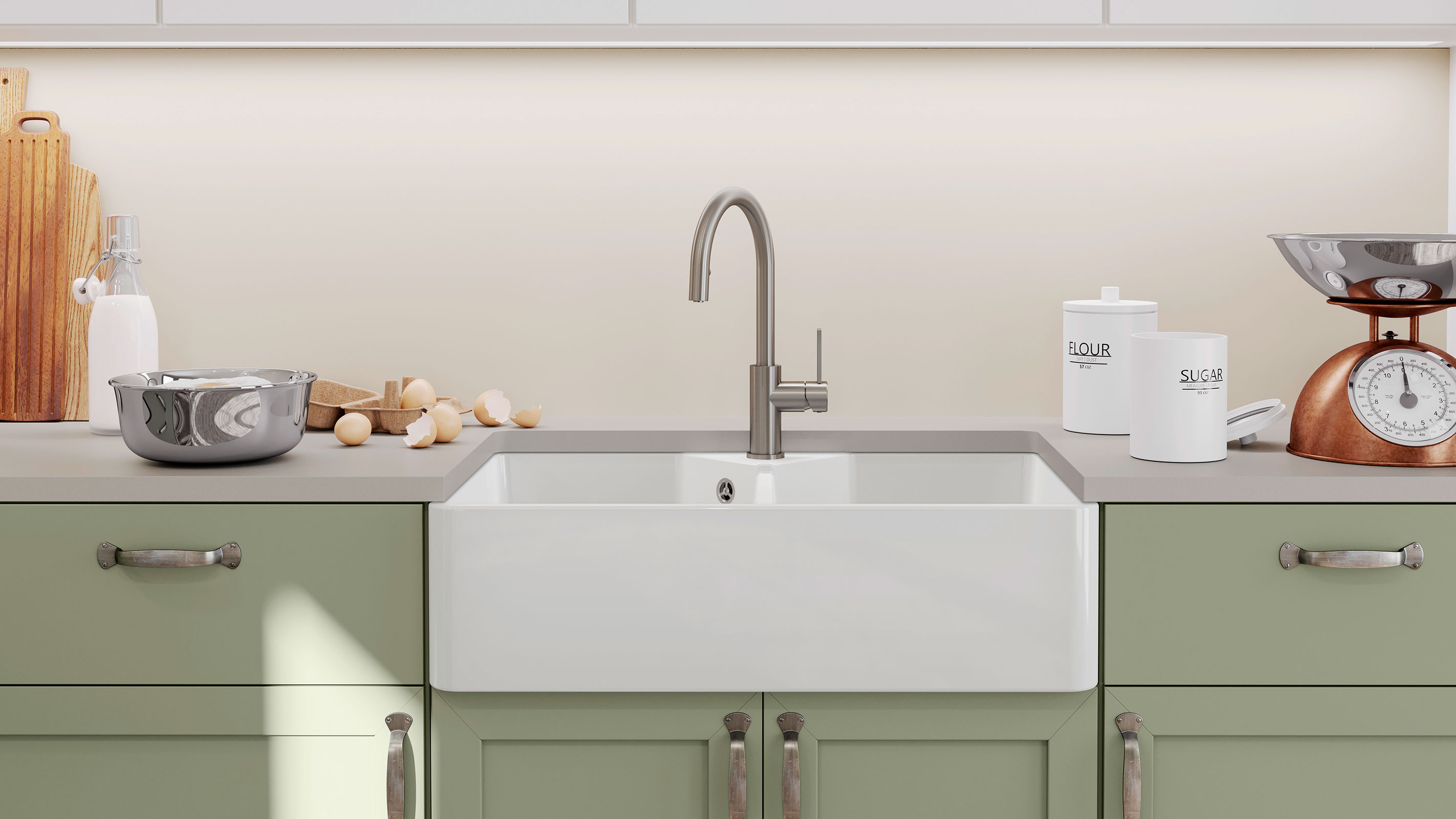
Are there any disadvantages to Belfast sinks?
Of course just as with everything there are a few downsides to both Belfast and Butler sinks you should be aware of in order to ensure you are choosing the best type of fitting for your space. Disadvantages include:
- Unforgiving: Ceramic is incredibly hard which in someways in a plus point — but drop a glass or plate in one and it is more than likely to break.
- Heavy: Being large and weighty, some units may need reinforcement in order to take their weight.
- Expensive: Belfast sinks tend to lie at the higher end of the price scale to more basic, stainless steel models.
- Potential to crack: While these ceramic sinks are very tough, they can chip or crack if something very heavy is dropped into them.
- Can be hard to install: Belfast sinks can take a little more skill when it comes to fitting.
- No draining board: True Belfast and Butler sinks did not come complete with draining boards, so you will need to think about buying a freestanding drainer or having draining grooves built into your work surface.

Are there modern Belfast sinks?
Since the 1700s things have come on considerably in terms of kitchen design and the Belfast sink has not escaped these developments.
Belfast sinks are now available in materials other than ceramic, such as composite and stainless steel. They are also available in all kinds of configurations and with built-in draining boards, although whether they would still pass as authentic is another matter. Perhaps it is more accurate to see them as modern interpretations of the classic Belfast sink.
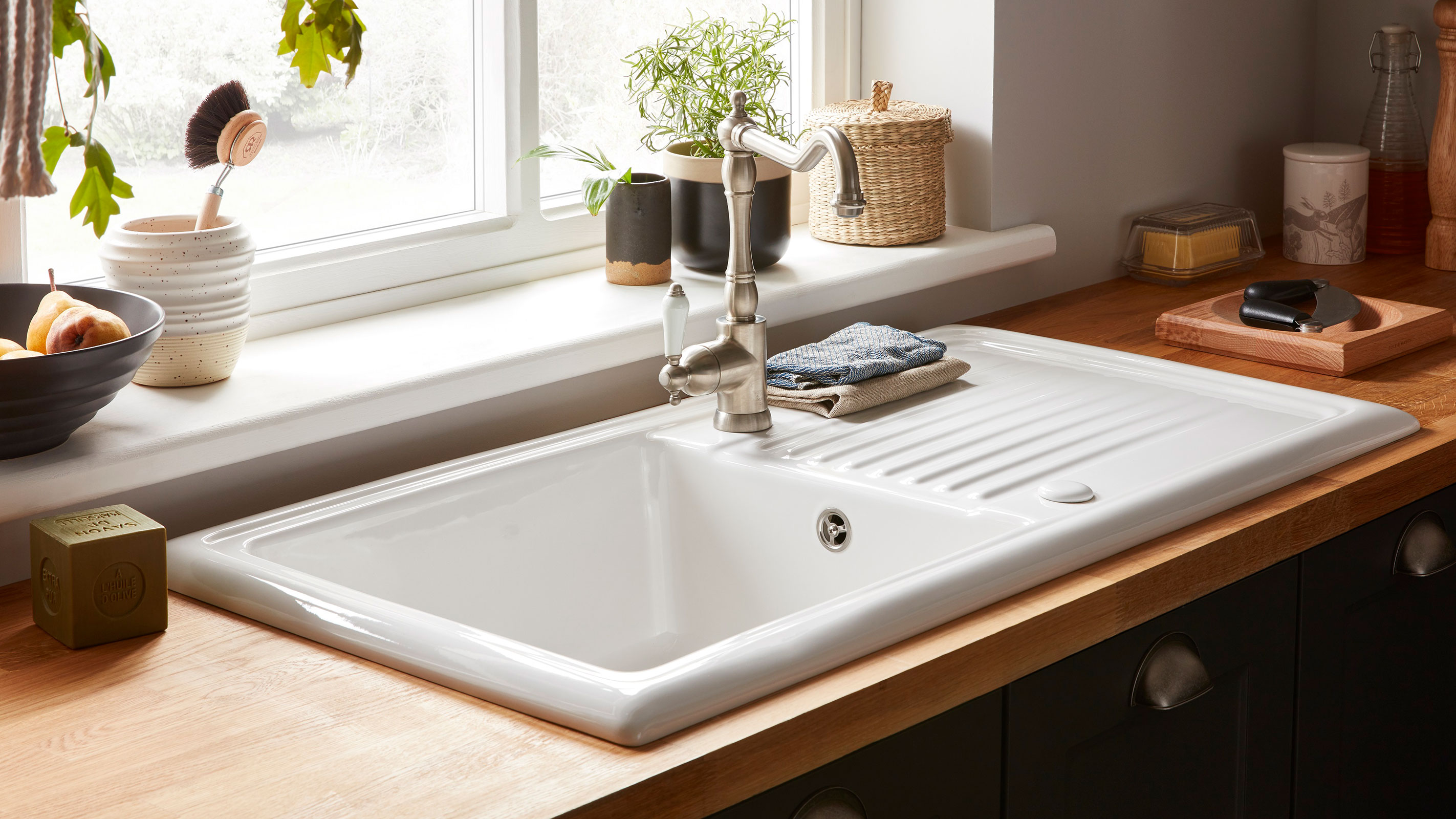
Natasha was Homebuilding & Renovating’s Associate Content Editor and was a member of the Homebuilding team for over two decades. In her role on Homebuilding & Renovating she imparted her knowledge on a wide range of renovation topics, from window condensation to renovating bathrooms, to removing walls and adding an extension. She continues to write for Homebuilding on these topics, and more. An experienced journalist and renovation expert, she also writes for a number of other homes titles, including Homes & Gardens and Ideal Homes. Over the years Natasha has renovated and carried out a side extension to a Victorian terrace. She is currently living in the rural Edwardian cottage she renovated and extended on a largely DIY basis, living on site for the duration of the project.

